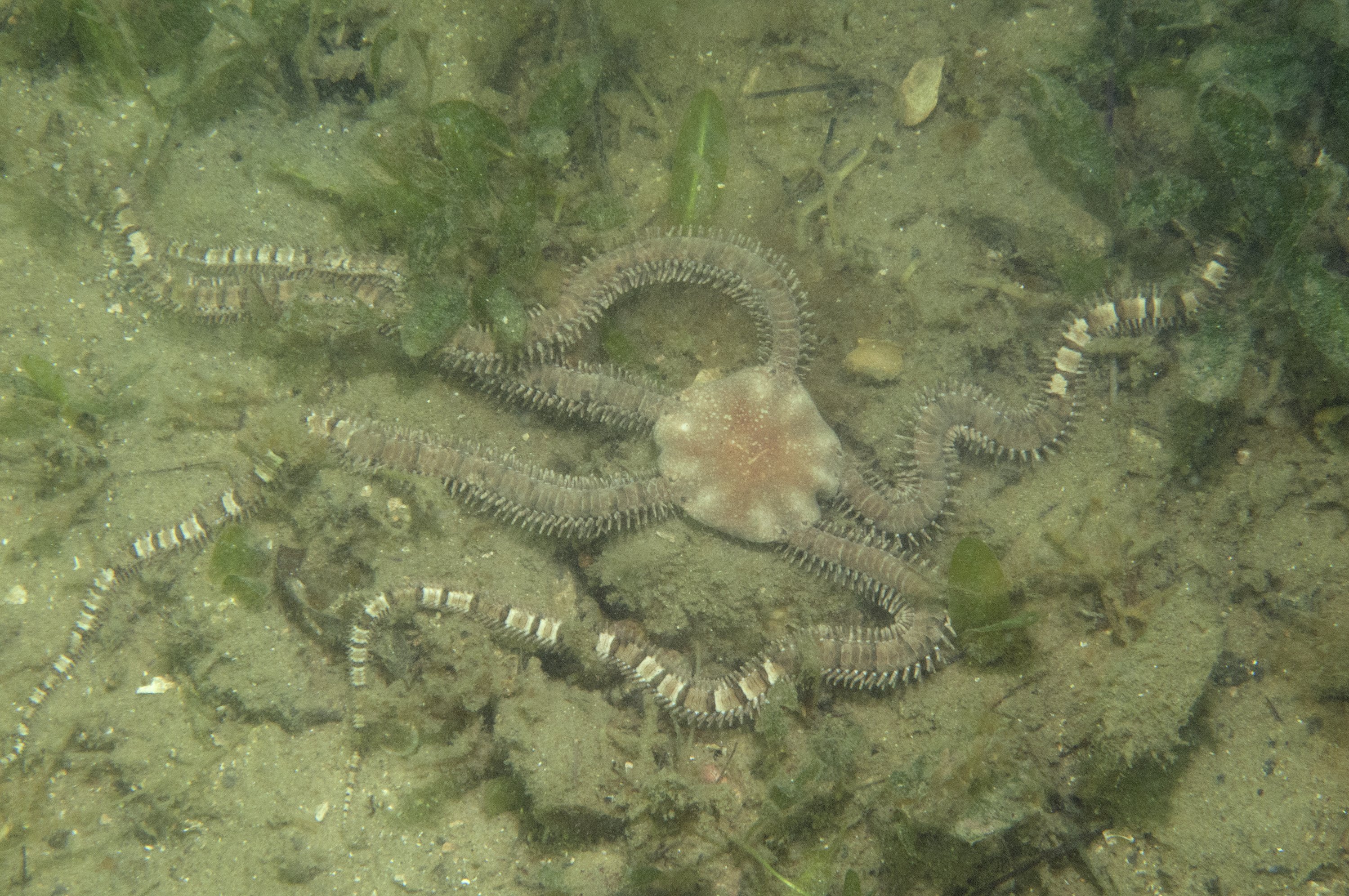Ophionereis Schayeri on:
[Wikipedia]
[Google]
[Amazon]
 ''Ophionereis schayeri'', Schayer's brittle star, is a brittle star in the
''Ophionereis schayeri'', Schayer's brittle star, is a brittle star in the
 ''Ophionereis schayeri'', Schayer's brittle star, is a brittle star in the
''Ophionereis schayeri'', Schayer's brittle star, is a brittle star in the family
Family (from la, familia) is a Social group, group of people related either by consanguinity (by recognized birth) or Affinity (law), affinity (by marriage or other relationship). The purpose of the family is to maintain the well-being of its ...
Ophionereididae
Ophionereididae are a family of brittle stars.
Systematics
Ophionereididae has been placed (along with Ophiocomidae) to the Taxonomic rank, superfamily Ophiocomidea and infraorder Chilophiurina or suborder Chilophiurina in different classificati ...
.
Description
The central disk is up to 2.5 centimetres wide, with arms to 15 centimetres long. The species is a filter-feeder that sifts sand and mud from the ocean floor for detritus and plankton.Habitat and distribution
Schayer's Brittle Star is found off the coast of Australia. Areas include New South Wales, Victoria, South Australia, Western Australia and Tasmania. It is the largest and most common brittle star found nearSydney
Sydney ( ) is the capital city of the state of New South Wales, and the most populous city in both Australia and Oceania. Located on Australia's east coast, the metropolis surrounds Sydney Harbour and extends about towards the Blue Mountain ...
.
The species occurs from the inter-tidal zone to 180 metres below sea level. This brittle star may be found under boulders in tidal areas. It moves quickly away from light when exposed. To reduce exposure to high temperatures, ''O. schayeri'' will form clusters under boulders in rocky reef habitats. Under these boulders, they scavenge for food by extending their arms out at night. Like many species inhabiting tide pools, ''O. schayeri'' may be particularly susceptible to the increased temperatures and ocean acidification engendered by climate change.
Life cycle
As all brittle stars, Schayer’s brittle star undergoes a process of metamorphoses throughout their life cycle, starting from planktotrophy and moving to brooded lecithotrophy. The larva of a Schayer’s brittle star is bilaterally symmetrical, with a ciliated band around the body. The next developmental form is a vitellaria larva, bordered by ciliary ridges. The vitellaria larva soon develops juvenile tube feet and ventral skeletal plates. This metamorphosis results in a full body transformation from bilateral to radial symmetrical form, the last of which resembles other members of the Echinodermata phylum. (Selvakumaraswamy & Byrne, 2004). This evolutionary adaptation from planktotrophic to lecithotrophic development can be associated with an increased maternal reliance. The lecithotrophic development evolved along with a larger egg. Both of these evolutionary adaptations led to an increase in triglyceride present in the eggs. The effect of this increase in triglyceride levels on the eggs is still currently undergoing research (Inke ''et al'', 2006).Bioluminescence
Similar to the related species '' O. fasciata'', Schayer's brittle star is capable ofbioluminescence
Bioluminescence is the production and emission of light by living organisms. It is a form of chemiluminescence. Bioluminescence occurs widely in marine vertebrates and invertebrates, as well as in some fungi, microorganisms including some b ...
, which may function as a warning to predators. It is hypothesized that this behavioral phenomenon requires extra-cellular calcium, associating with the radial nerve chord in order to trigger the luminescence. The fluorescent cells are photocytes, which can be found under the ventral, dorsal, and lateral arm plates. The true functional purpose of this bioluminescence has yet to be studied.
References
{{Taxonbar, from=Q1963770 Ophionereididae Animals described in 1844